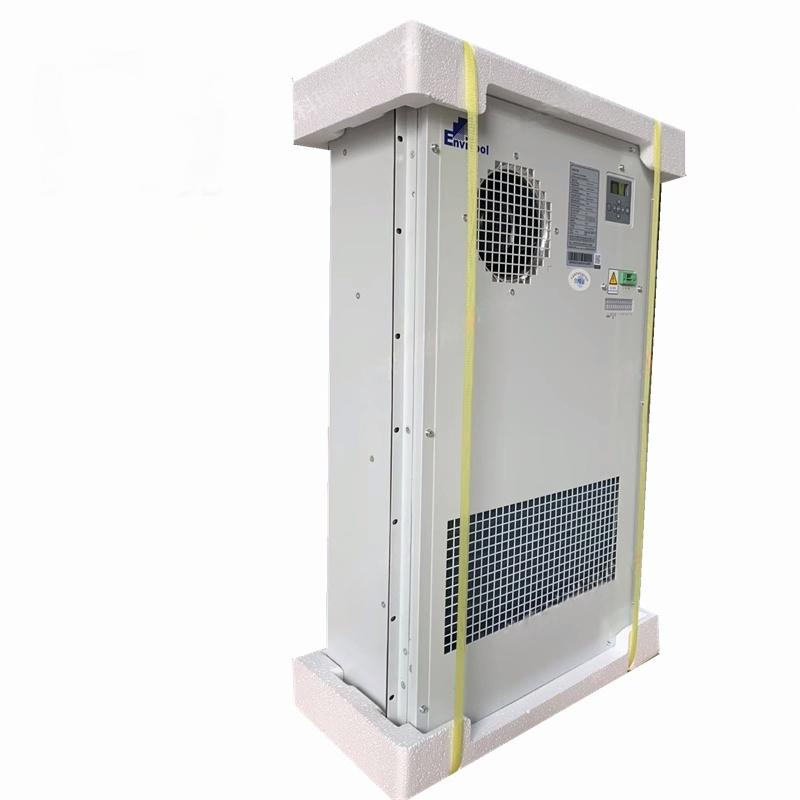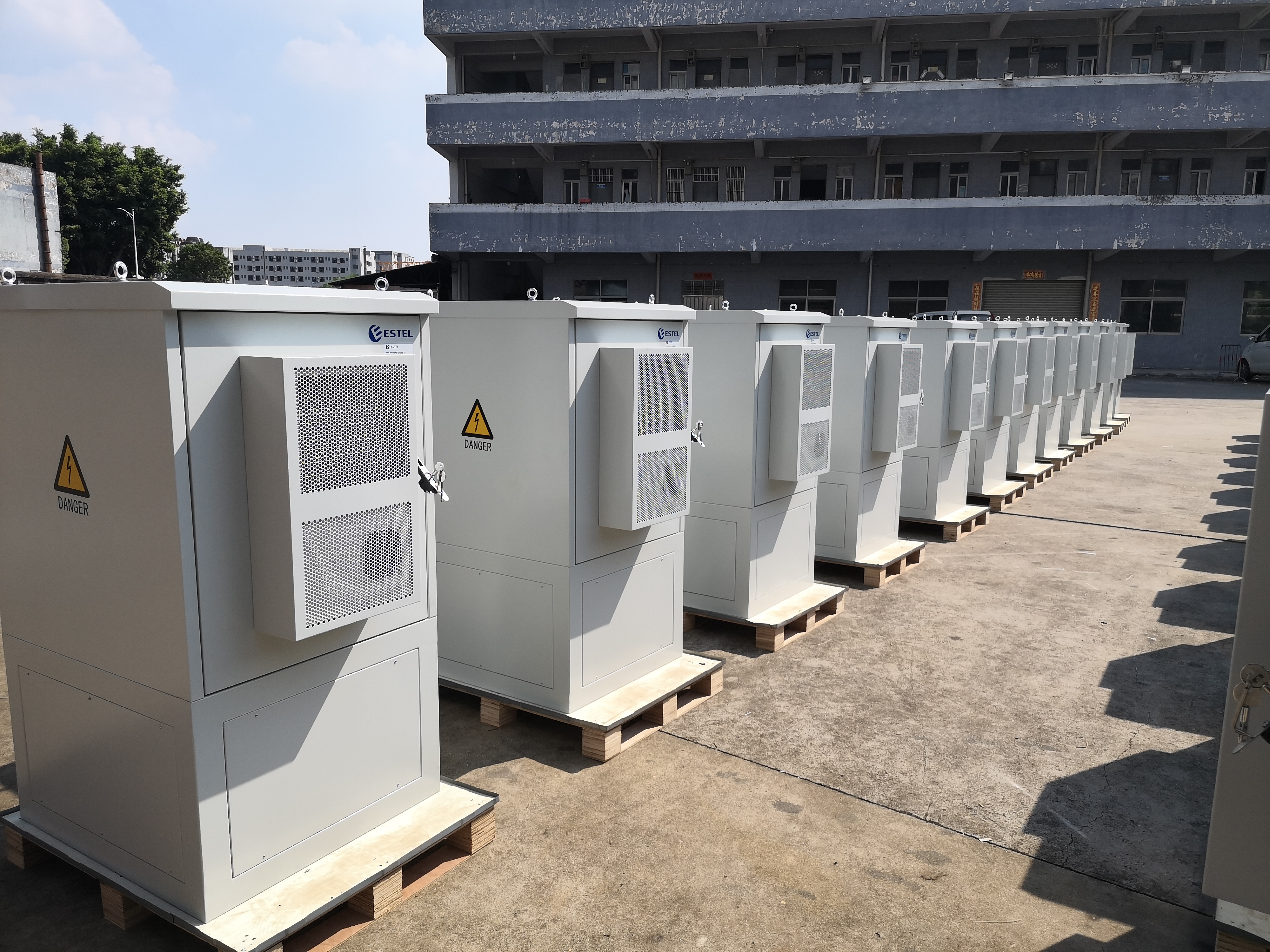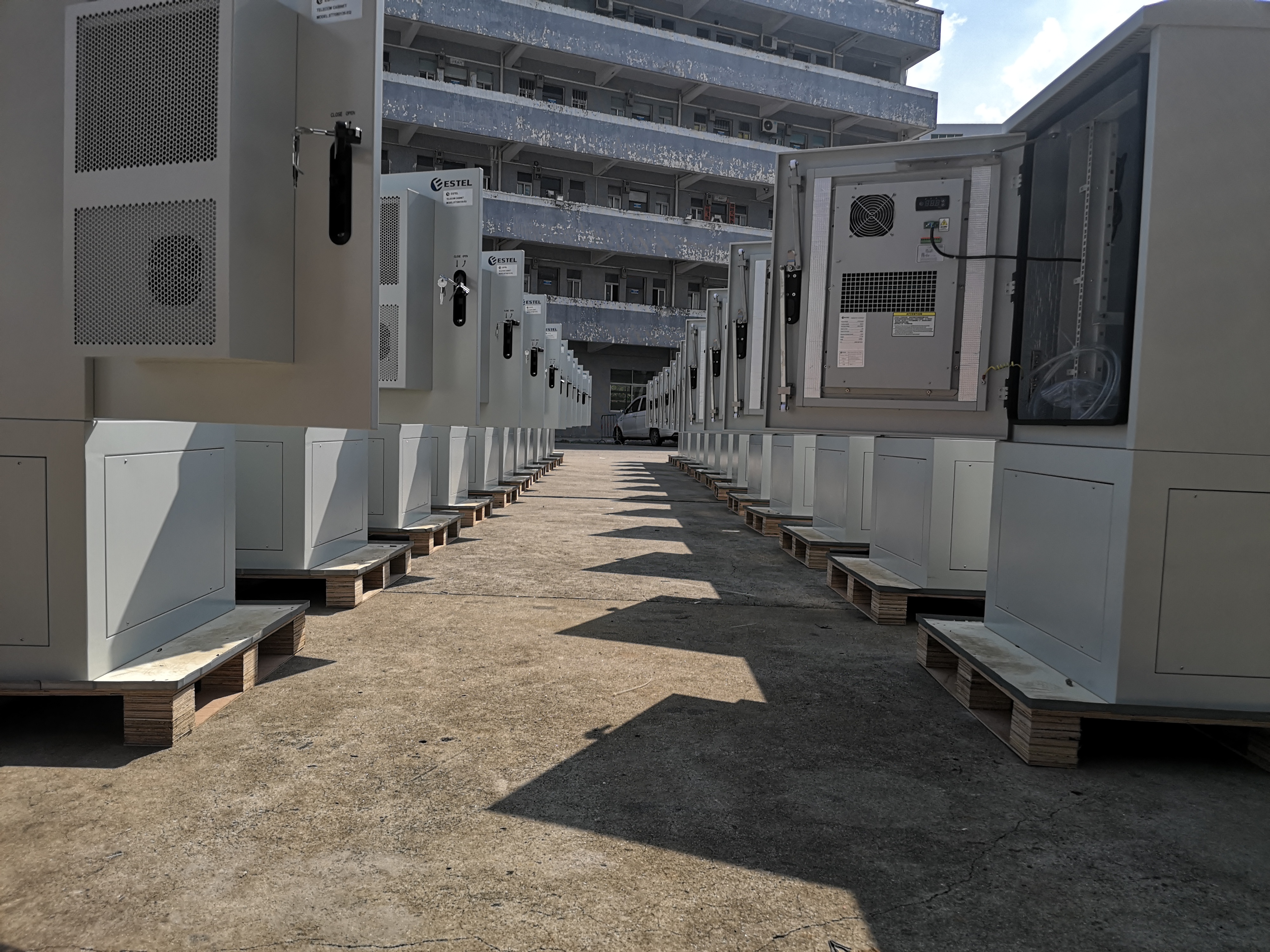Why Air Conditioning Matters for Outdoor Communication Cabinets

Outdoor communication cabinets play a vital role in safeguarding critical telecommunications equipment. These cabinets, like the Outdoor Telecom Cabinet by Tianjin Estel Electronic Science and Technology Co., Ltd, must maintain stable environmental conditions to ensure uninterrupted operations. Without effective outdoor climate control, you risk exposing your equipment to overheating, moisture damage, and dust accumulation. These factors can compromise performance and lead to costly repairs. Choosing the right air conditioning system is essential for maintaining the reliability and efficiency of your outdoor communication cabinet. As the Chinese phrase goes, 通信机柜对于空调的选择至关重要.
Key Takeaways
Air conditioning is essential for maintaining optimal temperatures in outdoor communication cabinets, preventing overheating and ensuring reliable operation even in extreme weather conditions.
Effective moisture control through air conditioning systems reduces the risk of condensation, corrosion, and electrical failures, protecting sensitive equipment from damage.
Regular maintenance of air conditioning systems is crucial for maximizing efficiency and minimizing repair costs, ultimately extending the lifespan of your communication equipment.
Investing in energy-efficient air conditioning solutions not only protects your equipment but also leads to significant cost savings over time by reducing maintenance and operational expenses.
Compliance with industry standards is facilitated by air conditioning systems, helping to avoid penalties and ensuring uninterrupted operations for critical communication infrastructure.
Challenges Faced by Outdoor Communication Cabinets

Extreme Temperature Variations
Overheating risks due to solar radiation
Outdoor cabinets often face direct exposure to sunlight, causing internal temperatures to rise significantly. The external temperature can range from -30°C to 55°C, while the equipment chamber may reach up to 85°C. Such heat buildup can lead to thermal shutdowns, component failures, or even permanent damage to sensitive electronics. Without proper cooling, the heat generated by the equipment itself exacerbates the problem, making temperature regulation critical.
Freezing temperatures and their impact on equipment
Cold climates pose unique challenges for outdoor communication cabinets. Low temperatures can reduce battery capacity, leading to faster depletion and compromised performance. LCD screens may exhibit delayed responses or image distortions in extreme cold. Additionally, freezing temperatures can cause components to shrink, potentially damaging connections and disrupting operations. Maintaining an optimal internal temperature, such as 25°C for batteries, ensures reliable performance even in harsh winter conditions.
Humidity and Moisture Issues
Condensation leading to corrosion and electrical shorts
High humidity levels, often exceeding 80%, can lead to condensation inside outdoor cabinets. This moisture can freeze in sub-zero temperatures, disrupting sensitive electrical systems. Condensation also reduces the insulation performance of electrical equipment, increasing the risk of electrical shorts. Over time, moisture ingress can cause corrosion, leading to structural damage and safety hazards. Effective moisture control is essential to prevent these issues and protect your equipment.
Mold and mildew growth inside cabinets
Excessive humidity creates a breeding ground for mold and mildew, which can compromise the integrity of your outdoor communication cabinet. These contaminants not only damage internal components but also degrade air quality within the enclosure. Keeping humidity levels below 60% helps prevent mold growth and ensures a clean environment for your equipment.
Dust and Airborne Particles
Clogging of ventilation systems
Outdoor cabinets are constantly exposed to dust and airborne particles, which can clog ventilation systems. Blocked vents restrict airflow, causing heat to accumulate and increasing the risk of overheating. Regular maintenance and proper filtration systems are necessary to keep ventilation pathways clear and functional.
Damage to sensitive communication equipment
Dust particles can infiltrate the cabinet and settle on sensitive components, leading to malfunctions or reduced efficiency. Over time, this accumulation can cause wear and tear, shortening the lifespan of your equipment. Ensuring clean airflow through effective filtration minimizes these risks and maintains optimal performance.
How Air Conditioning Addresses These Challenges
Temperature Regulation
Maintaining optimal operating temperatures for communication equipment
Air conditioning systems play a crucial role in maintaining the ideal temperature for your communication equipment. These systems prevent overheating by dissipating the heat generated by electronic components. Active cooling systems, such as fans and heat exchangers, ensure that the internal temperature remains stable even during extreme weather conditions. For colder climates, integrated heating elements protect your equipment from freezing temperatures, ensuring uninterrupted performance.
Mechanism | Description |
|---|---|
Cooling Systems | Dissipate heat generated by electronic components using fans, air conditioners, or heat exchangers. |
Heating Systems | Integrated heating elements to prevent equipment malfunctions in cold climates. |
Humidity Control | Dehumidifiers or moisture-absorbing materials maintain appropriate humidity levels to prevent corrosion. |
Ventilation | Ensures a constant flow of air to prevent heat buildup inside the cabinet. |
Insulation | Protects equipment from temperature fluctuations and external weather conditions. |
Thermostats/Sensors | Automated systems monitor and adjust climate conditions based on predefined parameters. |
Preventing thermal shutdowns and hot spots
Thermal shutdowns and hot spots can disrupt operations and damage sensitive communication equipment. Air conditioning systems distribute cool air evenly, eliminating hot spots and ensuring consistent performance. Thermostats and sensors monitor temperature changes and adjust cooling levels automatically, providing reliable temperature regulation.
Moisture Control
Reducing humidity levels to prevent condensation
High humidity levels can lead to condensation, which poses a significant risk to your equipment. Climate control systems often include dehumidifiers or moisture-absorbing materials to maintain appropriate humidity levels. By reducing moisture, these systems prevent condensation from forming on electrical components, safeguarding your equipment from damage.
Protecting against corrosion and electrical failures
Moisture management is essential for preventing corrosion and electrical shorts. Air conditioning systems with advanced moisture control features protect your communication equipment by keeping humidity levels below critical thresholds. This ensures long-term reliability and reduces the risk of costly repairs.
Filtration and Air Quality
Filtering out dust and airborne particles
Modern air conditioning systems effectively filter out dust and debris protection for your equipment. Built-in filtration systems trap large particles like dust and pollen, while advanced filters, such as HEPA, remove smaller contaminants like bacteria and mold spores. This ensures that your communication equipment operates in a clean environment.
Ensuring clean airflow for sensitive electronics
Clean airflow is vital for the optimal performance of sensitive electronics. Air conditioning systems with microbial HVAC filters neutralize harmful microorganisms, improving air quality inside the cabinet. This prevents dust accumulation and extends the lifespan of your equipment.
Energy Efficiency
Modern air conditioning systems with energy-saving features
Energy efficiency is a critical factor when selecting an air conditioning system for your telecom cabinet. Modern systems are designed with advanced energy-saving features that optimize performance while minimizing power consumption. For example, variable-speed compressors adjust cooling output based on the internal temperature of the cabinet. This ensures that the system only uses the energy required to maintain optimal conditions, reducing unnecessary power usage.
Another feature to consider is intelligent climate control. These systems use sensors to monitor temperature and humidity levels inside the telecom cabinet. By automatically adjusting cooling and dehumidification settings, they prevent energy waste while maintaining a stable environment. Additionally, some air conditioning units incorporate eco-friendly refrigerants, which not only improve energy efficiency but also reduce environmental impact.
Balancing cooling needs with power consumption
Balancing the cooling requirements of your telecom cabinet with power consumption is essential for cost-effective operations. Overcooling wastes energy and increases operational costs, while insufficient cooling risks damaging sensitive equipment. To achieve this balance, you should select an air conditioning system tailored to the specific needs of your cabinet.
For instance, a telecom cabinet equipped with a well-designed ventilation system can reduce the workload on the air conditioner. Proper airflow management ensures that heat is efficiently dissipated, allowing the cooling system to operate at lower power levels. Additionally, programmable thermostats enable you to set temperature thresholds, ensuring the system only activates when necessary. This approach not only conserves energy but also extends the lifespan of the cooling equipment.
By investing in energy-efficient air conditioning solutions, you can protect your telecom cabinet while keeping operational costs under control. These systems provide a sustainable way to maintain optimal performance without compromising on reliability.
Benefits of Air Conditioning for Outdoor Communication Cabinets

Extended Equipment Lifespan
Reduced wear and tear on components
Air conditioning systems significantly reduce wear and tear on your communication equipment. By maintaining a stable internal environment, these systems prevent components from being exposed to extreme temperature fluctuations. This stability minimizes the stress on sensitive parts, ensuring they operate efficiently for longer periods. Proper cooling also supports good heat dissipation performance, which is essential for protecting electronic components from overheating.
Lower risk of premature failure
When your outdoor communication cabinet operates under optimal conditions, the risk of premature equipment failure decreases. Air conditioning systems eliminate the threats posed by overheating, condensation, and dust accumulation. This proactive approach ensures that your equipment remains functional and reliable, reducing the likelihood of costly replacements or repairs.
Improved System Performance
Consistent operation in all weather conditions
Outdoor communication cabinets face diverse environmental challenges, from scorching heat to freezing cold. Air conditioning systems ensure consistent operation by regulating internal temperatures and humidity levels. This reliability allows your equipment to perform optimally, regardless of external weather conditions. With proper climate control, you can trust your cabinet to deliver uninterrupted service year-round.
Enhanced reliability for critical communication systems
Critical communication systems demand high reliability. Air conditioning systems protect your equipment from environmental hazards, ensuring it operates without interruptions. By maintaining a controlled environment, these systems enhance the overall reliability of your communication infrastructure, supporting seamless connectivity and data transmission.
Compliance with Industry Standards
Meeting regulatory requirements for equipment protection
Air conditioning systems help your outdoor communication cabinet meet industry standards for equipment protection. For example, NEMA ratings classify enclosures based on their ability to resist environmental hazards like dust, rain, and corrosion. Cabinets with NEMA 4 or NEMA 4X ratings provide waterproof and dust-tight protection, with NEMA 4X offering additional corrosion resistance. Climate control options, including air conditioning, are essential for maintaining these protection levels and safeguarding sensitive equipment.
Avoiding penalties or operational disruptions
Non-compliance with industry standards can lead to penalties or operational disruptions. By integrating air conditioning systems into your outdoor communication cabinet, you ensure compliance with regulatory requirements. This proactive measure protects your investment and prevents costly downtime, allowing your operations to run smoothly.
Cost Savings Over Time
Lower maintenance and repair costs
Investing in air conditioning for your outdoor communication cabinet reduces maintenance and repair expenses. By maintaining a stable environment, air conditioning systems prevent issues like overheating, condensation, and dust accumulation. These problems often lead to frequent repairs or replacements, which can strain your budget.
When your equipment operates under optimal conditions, it experiences less wear and tear. This reduces the likelihood of unexpected breakdowns. For example, components like circuit boards and power supplies last longer when protected from extreme temperatures and moisture. You spend less on emergency repairs and routine maintenance, allowing you to allocate resources more effectively.
Tip: Regularly inspect and clean your air conditioning system to maximize its efficiency and further lower maintenance costs.
Additionally, modern air conditioning units often include self-diagnostic features. These systems alert you to potential issues before they escalate, saving you from costly repairs. By addressing minor problems early, you can avoid significant disruptions and expenses.
Increased return on investment for equipment
Air conditioning systems enhance the longevity and performance of your communication equipment, ensuring you get the most out of your investment. When your equipment operates efficiently over an extended period, you achieve a higher return on investment (ROI).
Consider this: replacing damaged components or entire systems can be expensive. With proper climate control, you minimize these risks. Your equipment remains functional for its intended lifespan, reducing the need for premature replacements.
Scenario | Without Air Conditioning | With Air Conditioning |
|---|---|---|
Equipment Lifespan | Shortened due to damage | Extended through protection |
Maintenance Costs | High due to frequent repairs | Lower with fewer issues |
Operational Downtime | Frequent interruptions | Minimal disruptions |
By ensuring consistent performance, air conditioning also supports uninterrupted operations. This reliability translates to better service delivery, which can boost customer satisfaction and revenue. Over time, the savings on repairs, replacements, and downtime add up, making air conditioning a cost-effective solution for your outdoor communication cabinet.
Note: Protecting your equipment with air conditioning is not just an expense—it's a strategic investment in long-term efficiency and profitability.
Outdoor communication cabinets, such as the Outdoor Telecom Cabinet by Tianjin Estel Electronic Science and Technology Co., Ltd, face constant environmental challenges. Air conditioning systems address these issues by maintaining consistent temperatures, managing humidity, and filtering out contaminants. This ensures optimal equipment performance, longer lifespans, and reduced maintenance costs. With energy-efficient designs and adaptability to various climates, air conditioning systems provide a sustainable solution. By prioritizing air conditioning, you protect your investment, ensure compliance with industry standards, and achieve uninterrupted operations. Choose air conditioning to secure the future of your communication infrastructure.
FAQ
What is the primary purpose of air conditioning in outdoor communication cabinets?
Air conditioning ensures your equipment operates within optimal temperature and humidity levels. It prevents overheating, condensation, and dust accumulation, which can damage sensitive components. This protection enhances reliability and extends the lifespan of your communication systems.
How does air conditioning improve energy efficiency in telecom cabinets?
Modern air conditioning systems use energy-saving features like variable-speed compressors and intelligent climate control. These technologies optimize cooling performance while minimizing power consumption. This balance reduces operational costs and ensures sustainable energy use.
Can air conditioning systems handle extreme weather conditions?
Yes, advanced air conditioning systems are designed to perform in diverse climates. They regulate internal temperatures during extreme heat or cold, ensuring consistent operation. Integrated heating elements and insulation protect your equipment from freezing conditions.
How often should you maintain the air conditioning system in your cabinet?
You should inspect and clean your air conditioning system every three to six months. Regular maintenance ensures optimal performance, prevents dust buildup, and identifies potential issues early. This proactive approach reduces repair costs and extends the system's lifespan.
Are air conditioning systems customizable for specific cabinet needs?
Yes, many air conditioning systems offer customization options. You can tailor features like cooling capacity, filtration systems, and energy-saving settings to meet your cabinet's unique requirements. This flexibility ensures maximum protection and efficiency for your equipment.
See Also
Understanding Outdoor Communication Cabinets And Their Advantages
Exploring The Functionality Of Outdoor Communication Cabinets
The Importance Of Outdoor Communication Cabinets In Telecom
CALL US DIRECTLY
86-13752765943
3A-8, SHUIWAN 1979 SQUARE (PHASE II), NO.111, TAIZI ROAD,SHUIWAN COMMUNITY, ZHAOSHANG STREET, NANSHAN DISTRICT, SHENZHEN, GUANGDONG, CHINA

